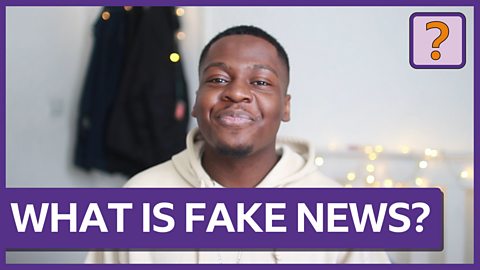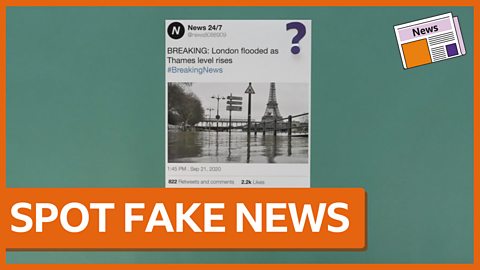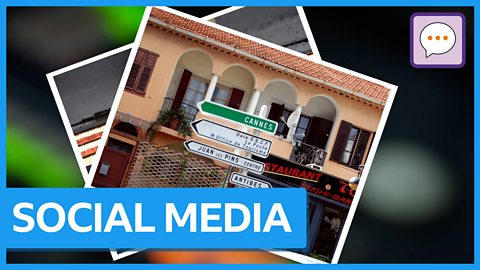From changing your hair colour to giving yourself a pair of big dog ears, there’s loads of fun to be had with the photo filters on social media apps. But some filtered selfies might be much harder to spot.
Filters that can smoothen out skin features or even ‘thin’ someone’s body aren’t just more examples of fake news online – they can have an impact on our mental health, too.
Find out how to overcome the effects of these misleading filters with Love Island stars Olivia Bowen and Laura Anderson, who also presents her own BBC Sounds podcast.
Olivia: Whether it’s TikTok, Snapchat or Instagram, everyone loves a good filter, right?
Laura: But sometimes filters are so good they make it difficult to know if a photo is real or if it’s edited.
Olivia: I’m Olivia Bowen
Laura: and I’m Laura Anderson
Olivia: and here are three reasons why fake selfies are bad for you.
Laura: According to recent research from Girlguiding, a third of girls and young women won’t post selfies online without using a filter to change their appearance.
Olivia: And it’s easy to understand why this happens. When we scroll through our feeds, we’re seeing images of ‘perfection’ all the time – which it’s easy to compare yourself to.
Laura: But as you may have guessed, these pictures could have been made perfect – with a little help from a filter.
Olivia: And just like a misleading headline or a photoshopped image, filters can change how something appears in real life – from a fact…
Laura: … to a fake.
Olivia: Platforms like Instagram will sometimes suggest new posts from other accounts it thinks you might like. And if you’ve liked posts from people who appear to look flawless in all of their pictures, you’re just going to see more and more of the same.
Laura: This is called a filter bubble, which could mean all the photos you’re seeing have been edited.
Olivia: If you are getting stuck, try and follow some different accounts – maybe ones that are more body positive – which might make your social media bubble a little less filtered.
Laura: It’s often hard to tell which photos are using filters and which ones aren’t.
Olivia: I’ve even looked at pictures of myself where I’ve been edited by someone else, by a photographer, and I’ve been like – that isn’t me is it?
Laura: If you believe that influencers, your friends, your family always look amazing, then you might not be looking past their post and realising that actually…
Olivia: … they’ve edited their pictures too.
Laura: This is called confirmation bias – because it confirms what we already think, instead of offering another angle.
Olivia: You can easily just have a go at limiting the amount of time you spend on social media apps, just to get a little bit of perspective. On some phones, you can actually put a time limit on different apps to remind you. Just like seeing lots of fake news, being bombarded with filtered images can have a negative effect on our mental health.
Laura: It makes our online lives look less realistic and helps to create an echo chamber…
Olivia: … where everyone posts the same things and follows the same trend.
Laura: If you’re getting stressed out by looking at everyone’s feeds, then try and spend less time looking at them.
Olivia: A study by the University of Leeds found that watching cute clips of animals and nature can actually reduce anxiety and trigger relaxation – and who doesn’t love that?
Laura: Remember to watch out for your mental health, because when you see what you think is a perfect picture…
Olivia: … it could actually be fake news.
Olivia and Laura’s tips for coping with fake selfies
1. Burst your filter bubble (of filters)
If you’ve liked and saved lots of fake selfies (even if you’re don’t know that they’re using filters), social media algorithms will remember your choices and suggest similar photos – which might be even more filtered.
Confusingly, this is called a filter bubble and it could see your social media feed full of cosmetic or ‘beauty-enhancing’ filters.
You can burst your bubble by following different accounts and liking different types of pictures so that the algorithm can learn and suggest other, more body positive posts.
2. Get some perspective
It’s hard to not be impressed by filtered pictures that look as if they’re flawless. Even if you know that these could be misleading, you still might think that this is how people look in real life.
This response is known as confirmation bias, and happens when you see things that confirm what you already believe or would like to believe.
Remind yourself of what’s real and what’s fake by limiting the amount of time you spend on social media apps. Some phones have timers that you can set for different apps to remind you to take a break.
3. Find a more relaxing feed
Remember that social media isn’t just full of filtered selfies. There’s nature and travel accounts, music and art posts, and even classic clips of animals being cute.
A recent study by the University of Leeds found that watching cute videos of animals and nature can actually reduce anxiety and trigger relaxation, so why not give it a go?
Where next?
Fake news and mental health
How does false information impact our wellbeing and what can we do about it? TikTok star Ehiz looks into the issue.

Five ways to spot misleading images online
Use these simple tips to spot suspicious images.

Be social media smart: Is seeing believing?
BBC newsreader Tina Daheley looks at how to check what can and can’t be believed.

Fact or Fake?
Find out how to spot and stop fake news with BBC Bitesize.
